John Goodhead: 1959 RAF Church Fenton Cadet Visit
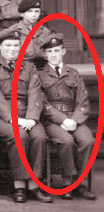 In the 1950s the RAF seemed to be very exciting. The new RAF fighter planes the Supermarine Swift and the Hawker Hunter broke several world records. The new Gloster Javelin all weather fighter had a delta wing and new Air-to-Air missiles. The iconic V-bombers were entering service. The first V-bomber was the Valiant painted in ‘anti-flash’ white. A year later there were the delta winged Avro Vulcans, then a year after that the last of the V-bomber types, the crescent winged Victors. Even RAF Transport Command had a jet transport squadron by the time I joined the Grammar School.
In the 1950s the RAF seemed to be very exciting. The new RAF fighter planes the Supermarine Swift and the Hawker Hunter broke several world records. The new Gloster Javelin all weather fighter had a delta wing and new Air-to-Air missiles. The iconic V-bombers were entering service. The first V-bomber was the Valiant painted in ‘anti-flash’ white. A year later there were the delta winged Avro Vulcans, then a year after that the last of the V-bomber types, the crescent winged Victors. Even RAF Transport Command had a jet transport squadron by the time I joined the Grammar School.
Bomber Command was commissioning a Thor missile squadron and Fighter Command seemed to be swapping fighter planes for Ramjet powered Bloodhound missiles. Then the amazing Lightning interceptor entered service so there was still a chance to be a pilot of the future in the RAF.
With all this in mind a week or two at an RAF camp in the late 1950s and early 60s looked like an exciting prospect for any RAF cadet.
Training Squadrons and Air Experience.
I am sure that most of the RAF personnel do not fly when they are at work, however it was important to get cadets into planes and off the ground. This was called Air Experience. At camps there were two ways to get Air Experience. The first was to be a passenger on a multi engine training flight with free seats in the back. The second was to become a temporary trainee pilot and sit with a pilot instructor, hands-on.
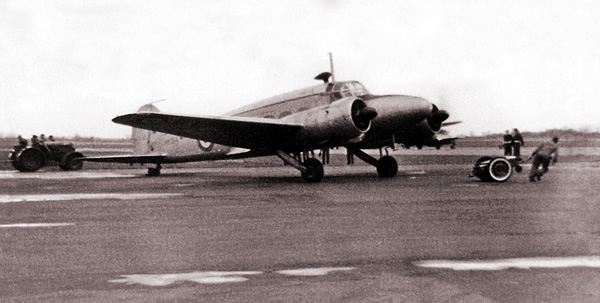
The Avro Anson looked like an old mini airliner. This type had been in service with the RAF since before WW2 and was still the standard twin engine trainer in the 1950s and 60s. They were slow, noisy, often smelling of ‘AvGas’ and exhaust fumes and were nothing like the supersonic RAF of the New Elizabethan Era of the newspaper headlines.
The Avro Anson was the most common provider of our Air Experience probably because there seemed to be one at every camp, more at RAF Shawbury and RAF Swinderby. One time Cadet Under Officer Ian Quayle took over the controls of one and took us all for a spin for an half an hour or so.
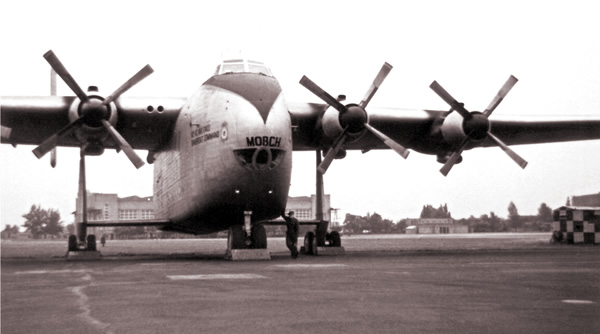
While at camp with Transport Command at RAF Dishforth we had the opportunity to fly in a Blackburn Beverly transport which was quite new, having only been in service since about 1955. At the time of entering service it was the largest aircraft in the RAF, I suppose they were around 3 stories high, they could carry 30 paratroopers in the tail boom and many more in the main cargo hold.
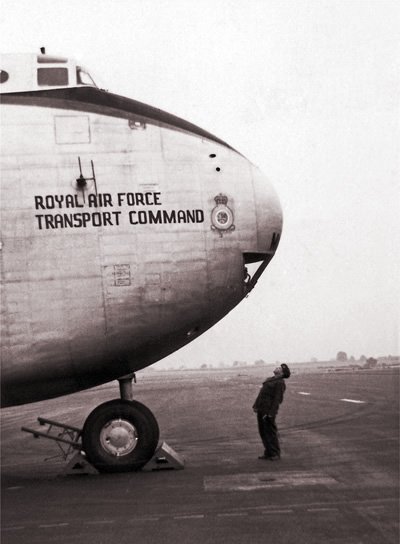
This is why I had my chum in the above shot for scale. There was an opportunity to fly in one of these planes when the crew were training on circuits and bumps. Circuits and bumps involves a plane taking off, flying round and coming in to land, rolling along the runway, powering up and taking off again, then doing it all over again and again. I declined the kind offer. Fortunately there was an option to go on the rifle range.
I had a hands-on opportunity in a De Havilland Chipmunk. This was a tandem seat basic trainer. I remember that it was difficult to walk to and get into the aircraft with my parachute bashing against the back of my legs, below the knee.
I also had a go in a Vampire T11, this fighter trainer had ejector seats. An aircraftwoman fastened me into the parachute which was fastened to the ejector seat. Even my ankles were strapped to the seat to stop my legs from flaying around and getting chopped off in the event of ejecting. Once I was fastened in, the aircraftwoman pulled out the seat’s arming pin and it’s big red disc from the back of the seat (like the pin out of the grenade) then showed it to me and stuck it in a pocket on the side of the seat. Now I knew that the seat was armed and it was safe for the pilot to take off.
Frontline Squadrons.
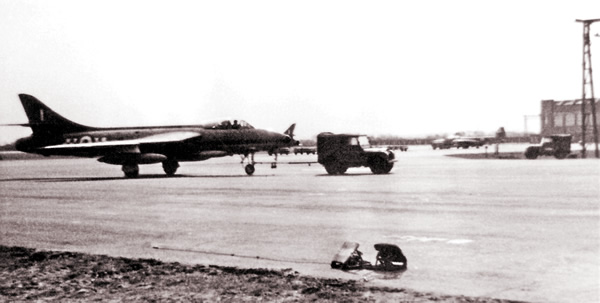
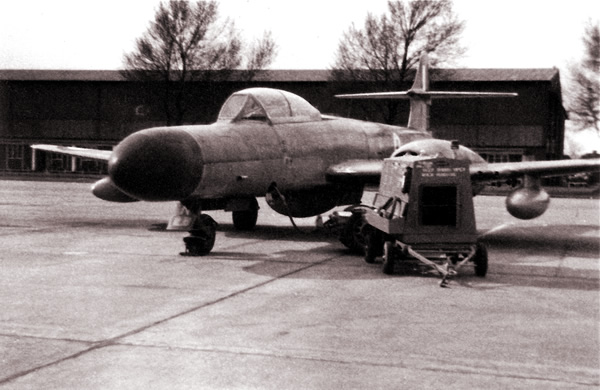
At RAF Church Fenton in 1959 there were two squadrons, one flying Hawker Hunter day fighters and another flying Gloster Meteor NF11 and NF14 night fighters. The Meteors were in the process of being phased out as the new Gloster Javelin night fighters came into service. If we had flown in a Meteor the bail out instructions were as follows; If you should need to leave the aircraft the pilot will let you know. He will tell you that he is releasing the canopy. After he has released the canopy he will tell you to stand. You stand and the airflow will carry you out of the cockpit to safety. So you stand, get hit in the chest by a 500+ mph gale which will thrust you backwards into the tail fin. Some new definition of the term ‘Safety’?
When I discovered the black and white contact prints from which these photographs have been taken I could not believe how very old fashioned the Meteors look. We were not allowed to photograph the Javelin or it’s air to air missiles.
RAF camps and air fields seemed to me to be a bit strange. Vast expanses of flat ground, buildings sparse and most of the time there seemed to be no one around. Great times, did a lot of shooting and learned a lot. However the RAF was a lot sexier in the newspapers.

